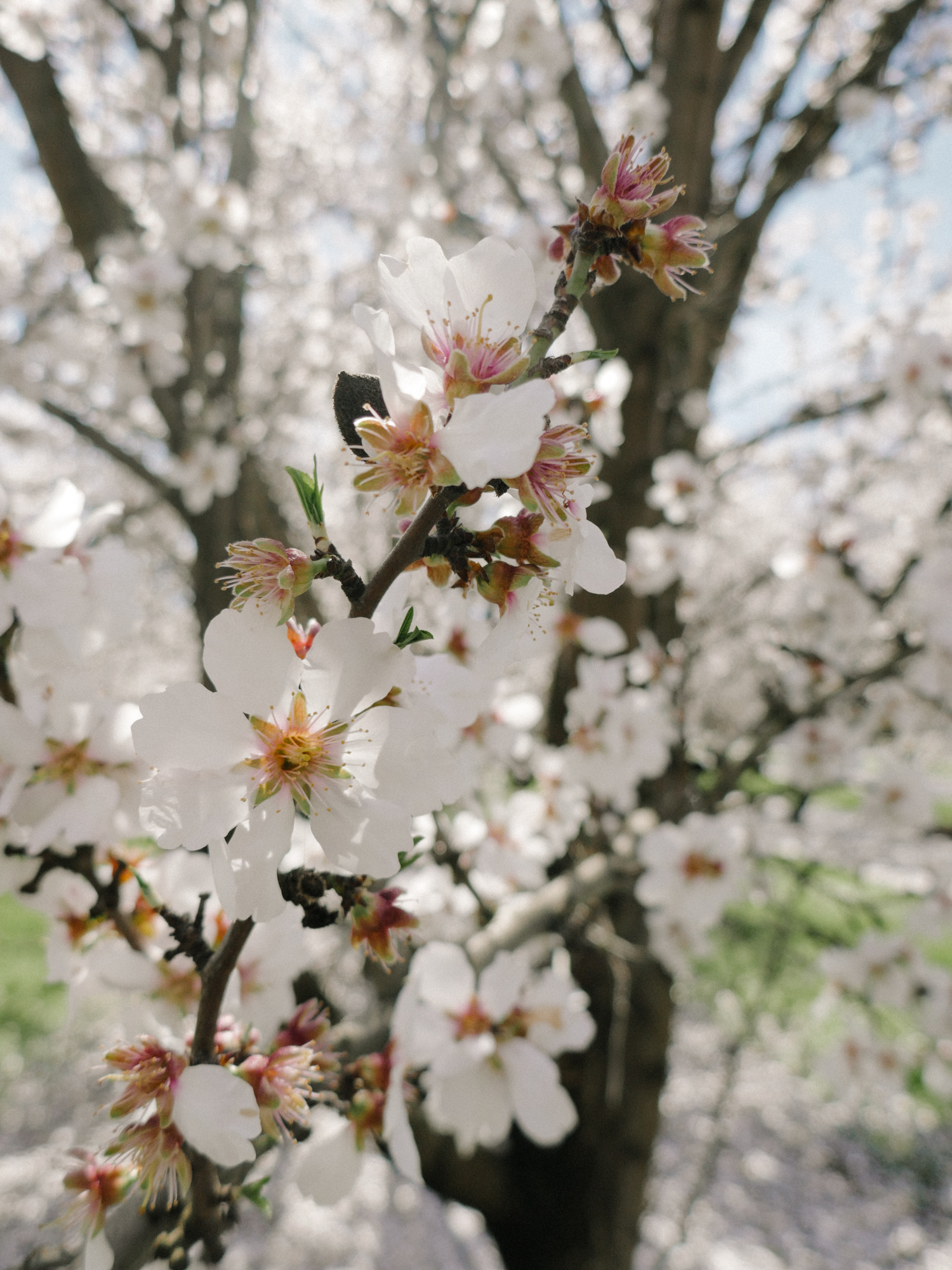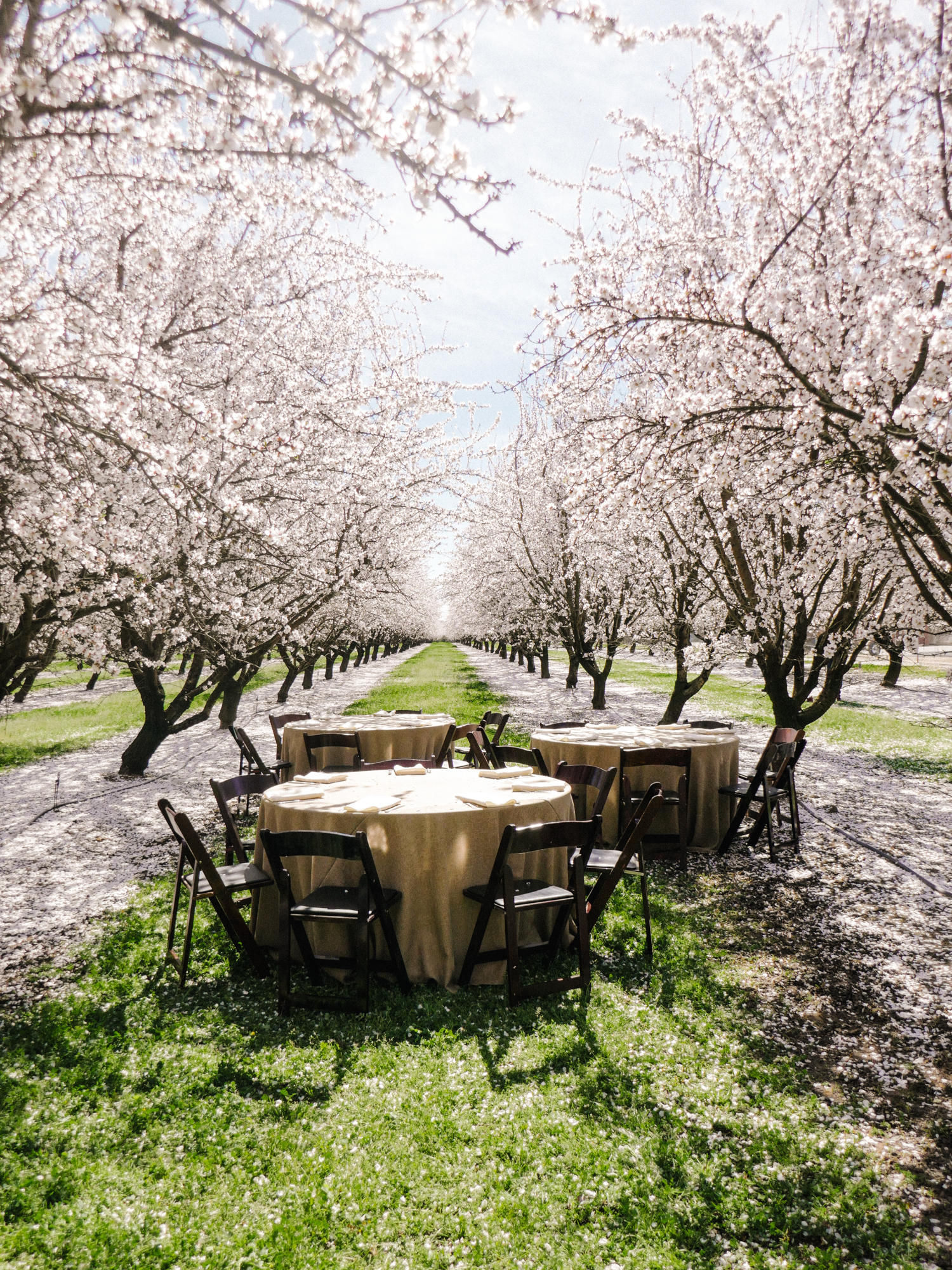A trip to the Californian Almond Orchards
This post has been sponsored by the Almond Board of California
As I write this I am sipping on a cup of Earl Grey and snacking on a handful of honey chili roasted almonds. It has become a daily habit. I tried a similar thing at Phippen Orchard in California earlier this year and have been hooked ever since. I am transported back to the stunning vision of the rows of pastel cream and pink petaled trees - the Californian Almond orchards in full bloom are quite a sight.
I visited California to learn a little more about almonds and how they are grown. A keen cook and a lover of natural ingredients, I am always fascinated to see how things are grown and the work that goes into them. High on the agenda for my trip was to learn about the move towards ‘zero waste’ and the commitment towards sustainability within almond harvesting. I’d heard rumors of the clever water saving methods being implemented over in California but I was keen to see it for myself.
One hundred per cent of the almonds grown in the USA are grown in the Central Valley, California. That represents 80% of worldwide production, meaning most of the almonds we eat have come from here.
I learnt a huge amount about almonds whilst in California, but here are the top four areas that I found most interesting.
1) Research
I visited two beautiful orchards during my trip and spent some time with the lovely people of the Almond Board of California (ABC) who are responsible for representing the interests of Californian almond growers and handlers.
I speak to Richard, the president and CEO of ABC, who talks us through their important work. He explains that the Almond Board’s role is not to sell almonds but rather it is a research-based organisation responsible for scientific, nutritional as well as agricultural and environmental research. Each year, millions of dollars go into research that supports the industry with water efficiency and bee health. Water can be scarce in California and so the question of how to ‘use less and save more’ is an ongoing investigation for the almond industry. In the past 20 years, the amount of water used to grow one pound has been reduced by 33% all thanks to the research the industry has invested in and the improvements in production practices and widespread adoption of micro-irrigation technology. ABC has also invested more into honey bee health research than any other US crop group, and growers have adopted voluntary measures to protect bees in the orchard and beyond.
2) Waste
I learn from Richard that the almond nut itself is just 30% of the grown product – there is also the husk and the shell. Many of the surrounding orchards are already making use of these excess materials by passing them on as nutritious feed for animals or burning them in contained ‘cogeneration’ areas to produce a substance called bio-char. There are wonderful possibilities for this substance. Most impressive is when it is bound with recycled plastic. Recycled plastic loses its strength easily and becomes weaker with each reuse. By binding it with bio-char, it remains strong and sturdy. Already it is being used for food packaging and planter pots but the hope is to incorporate it into other items, most notably car tyres.
Still amazed at the prospect of tyres made from almond shells, I then learn that they’ve also found a way to make beer from the almond shells. As well as holding nutrients, the shells are in fact 30% sugar, making them a brilliant starter brew. Excited as I am to tell my beer-loving boyfriend back home that he could soon be enjoying almond shell beer, I’m even happier to hear that the research has now been pushed in the direction of keeping the sugars as food for the bees. During the winter months, when there is no blossom, the bees need sustenance. Traditionally this is a basic sugar solution but this new research means that they can have sugar derived from the almond trees themselves. It seems both fair and genius that the bees can be fed by something they put such hard work into.
3) A family business
Family is strong in the almond growing industry (more than 90% of almond farms are family farms) and I learn that many of the growers are third or fourth generation farmers. The sense of family stretches beyond single orchards, too. There is a real sense of community between the orchards with all of the growers working on a mission to keep the almond orchards healthy and continuously working towards becoming a zero-waste operation.
I visit Phippen Orchard, owned by David Phippen. David is a third-generation almond grower and has been growing almonds since 1972. He has three children and four grandchildren and already works closely with his daughter and son-in-law on the orchard. Eventually they will take over and become the fourth generation of almond growers. Many of David’s team of growers and workers on the orchard have also been there for generations. California has some of the highest standards for environmental and workers’ rights and it is clear that the community is strong at Phippen Orchard.
4) Saving water
Water is the other key area where the almond farming community is making constant improvements and not settling with the achievements already delivered. Water is as precious as gold in California and the summers are often long and dry. Every drop must be used with utmost efficiency. David says the water- saving technology is so advanced now that even he can hardly believe it. He pulls out his iPhone and shows me how computerised probes in the ground link up to his IPhone show him when the almonds need water.
Previously, watering would have been done on a regular rota, but the new technology means that the almonds can effectively tell David when they are thirsty. I spot the sprinklers now running snake like and close to the ground which I suppose is to avoid unnecessary evaporation. I am right! I’m getting the hang of life on the orchard.
If this has sparked your interest, head to California Almond’s Growing Good site and learn more about almonds sustainability story.


